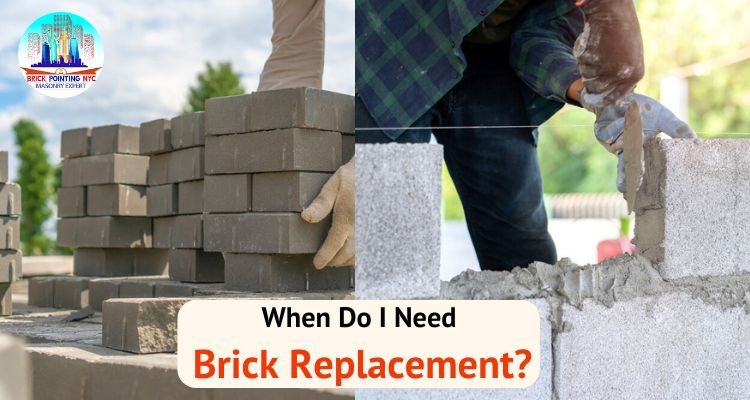Do you know brick is one of the toughest masonry materials? A brick construction can last for decades with adequate maintenance. By maintenance, we mean conducting regular inspections, cleaning, repairing, and restoring. It is quintessential to maintain your brick structure to preserve its aesthetics and functional value. Undoubtedly, the archetypal appeal of bricks makes it a classic choice for most property owners.
Nevertheless, despite the sturdiness of bricks, they are susceptible to considerable damage, leading to extensive structural deterioration. Whom do we blame? Well, extreme weather conditions, fluctuating temperatures, moisture, dust, and organic growth are primarily responsible for large-scale brick damage. Identifying the early signs and fixing them promptly will promote longevity. But, often, you may require brick replacement, considering the severity of the impairment.
The main question in this scenario is when replacing brick is necessary. Property owners are confused about whether a repair or replacement will be an ideal solution. So, we are here to clear the haze to ensure you are leading on the right path. Let’s begin.
Brick Replacement: When Do You Need It?
Living in cities like the Bronx, Queens, Manhattan, Long Island, Brooklyn, and Richmond Hill means you experience extreme climate conditions. In such scenarios, cracks and chips in brick constructions are commonplace. The good part is brick wall repair can fix such minor issues when you identify them in the early stages.
However, when brick damage affects the structural integrity, minor repairs cannot aid long-lasting results. You need partial or complete replacement. What are these damages requiring replacement? Let’s understand them.
- Disintegrating Mortar- In any brick structure, mortar joints are the weakest parts. Mortar is the bonding material between bricks, which comprises a mixture of cement, sand, lime, and water. Typically, you must repoint these joints every 15 to 20 years. Mortar deteriorates over time, resulting in crumbling and loosening joints. Often, bricks become movable or even go missing. It considerably affects overall structural stability. Replacement is the ideal option when the situation worsens, and repointing cannot fix the problem.
- Leaning Structure- If you are aware of the 9 facts of brick installations, you must know that a leaning structure indicates severe constructional damage. You are exposed to potential threats of sudden building collapse. It not only will lead to extensive property damage but may cause loss of lives. When the structural integrity of your building is in danger, there is no other option than replacing it.
- Bulging Bricks- Excessive moisture exposure causes frost boils, appearing as bulging bricks. Consistent freeze-thaw cycles are typically responsible for frost boils. You cannot repair the damaged bricks. You must replace them with new ones. In some cases, complete brick wall replacement is the only effective solution.
- Brick Deterioration- Like mortar, bricks may also crumble and disintegrate over a period. It happens when large cracks appear on the surface and are left untreated. The cracks spread to other areas, reaching the inner layers. The circumstance leads to water seepage gradually affecting the core of the structure. It is a severe concern since your building is no longer sturdy and stable. So, you are at risk of life-threatening consequences. Replace the damaged bricks promptly and restore structural integrity.
Key Takeaways
Brick damage is inevitable. However, detecting the early signs and taking prompt actions can promote longevity and ensure a safe living condition. Also, no matter how much the brick replacement cost is, do not give second thoughts. If you need replacement, do it to save lives and property.


